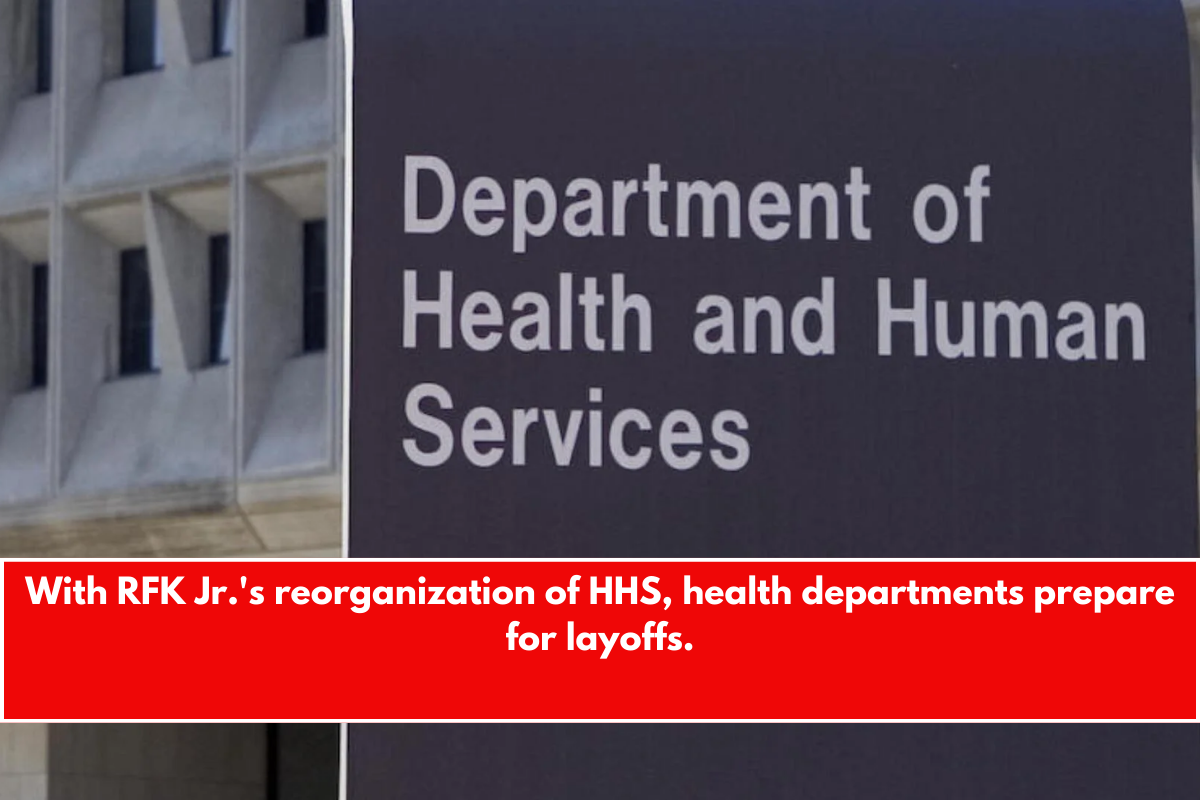Officials at several departments inside the agency of Health and Human Services say they are ready for significant layoffs as Secretary Robert F. Kennedy Jr. and his advisers reach final decisions on a massive restructure of the agency.
Multiple top health officials have been informed that Kennedy and his staff will make decisions on changes to the department’s composition and structure within the next week or two. One person said that aides had started crafting a restructuring statement.
The agency did not reply to a request for comment.
In addition to Amy Gleason, the official leader of the White House’s Department of Government Efficiency team, numerous other DOGE members work for HHS. Some have been directly engaged in the proposals, including former insurance executive Brad Smith, who was a key Medicare and Medicaid official during Trump’s first administration.
The expected cuts at the department under the White House’s reorganization and “reduction-in-force” plans come after many workers have already been fired or let go across the nation’s health agencies as a result of other moves, such as previous attempts to purge thousands of probationary workers, end fellowship programs, and terminate contractor agreements.
The following is the most recent information we have regarding the restructuring of multiple HHS departments, based on talks with more than a dozen health officials who were not allowed to comment publicly.
Agency for Healthcare Research and Quality
The workforce reduction proposed by HHS and DOGE authorities for certain top executives are extraordinary. On March 11, DOGE officials informed executives of one HHS department, the department for Healthcare Research and Quality, that up to 90% of their workforce will be slashed.
The agency employs approximately 300 people, many of whom are tasked with collecting and analyzing some of the federal government’s most widely cited health-care metrics, such as decades-old datasets tracking hospitalizations and emergency room visits across the country, on which economists and health policy researchers rely.
AHRQ also works on a variety of congressionally sponsored projects to address patient safety and healthcare errors, such as one focused at combatting antibiotic-resistant bacteria.
“The present workforce consists of around 45 highly experienced economists and statisticians. DOGE plans to reduce the overall personnel to six.
“The six people who would be willing to stay under those conditions would not be the best,” one health official told CBS News of the agency’s downsizing to one of its teams in charge of a big government database on medical expenditure.
Centers for Disease Control and Prevention
Some managers at the Centers for Disease Control and Prevention have been instructed to anticipate department cutbacks that might result in the layoff of up to 30% of the Atlanta-based agency’s employees.
According to government data, the CDC employed around 12,820 individuals at the conclusion of the previous fiscal year, up from 10,487 in the last year of the first Trump administration.
“A 30 percent reduction would be terrible. “We are already understaffed in a number of critical areas, and the staff that is barely holding it together have been in various stages of burnout for five years,” one CDC official said.
Some of these cutbacks may be accomplished by voluntary staff departures. Managers at the department were informed that around 400 employees had requested early retirement and approximately 600 had filed for a buyout, according to two officials, as part of offers made throughout HHS this month. It’s unknown how many people applied for both.
Others might be accomplished by reorganizing the agency’s operations. One idea being considered by authorities would relocate the CDC’s HIV prevention efforts somewhere inside the government.
Food and Drug Administration
Unlike other health departments, certain Food and Drug Administration employees were informed that they were ineligible to accept the HHS buyout offer.
This includes new drug application reviewers, whose wages are generally subsidized by fees paid by drugmakers seeking approval, rather by taxpayers.
Others at the agency have been instructed to prepare for layoffs. Internally, FDA administrators informed staff that they were unaware of the extent and goals for the reduction.
DOGE officials have paid many trips to the agency’s Maryland headquarters, according to one official. Another said that DOGE officials had been asking inquiries about the FDA’s laboratories this week.
Multiple FDA staffers said they anticipated some of the cutbacks to come from what they dubbed the agency’s rising brain drain, which has been dealing with a difficult return-to-work transition that is unlikely to improve anytime soon. The organization is now processing hundreds of retirement applications, according to one of its employees.
According to the workers, the FDA employs much more people than its headquarters can accommodate, leaving them fighting for parking places and running out of toilet paper in packed restrooms.
National Institutes of Health
Officials at the National Institutes of Health anticipate losses in the staff to return to levels observed at the conclusion of the Trump administration.
The medical science research organization employed more than 21,000 workers at the end of the fiscal year 2024, up from 17,705 at the end of the previous fiscal year 2019.
As with other agencies, some of the anticipated losses might be offset by voluntary departures of scientists and other employees. One participant said that they had heard at meetings that over 1,400 people had requested either the buyout, early retirement, or both.
According to one source, up to 3,800 people might be removed off the agency’s payroll, if not more, depending on how many staff members leave.
Centers for Medicare and Medicaid Services
Cutbacks at the Centers for Medicare and Medicaid Services may be fewer, analysts speculate, since the agency was already experiencing recruiting restrictions during the Biden administration.
According to InsideHealthPolicy, the agency’s chief operating officer only announced late last year that it would be able to begin recruiting after a financial turnaround.
The Baltimore-based organization has 6,557 workers in 2024, a modest increase from 6,074 in 2019.
One CMS official said that they had heard internally that the early retirements and buyouts undertaken by workers in various sectors of the agency may have been sufficient to save most of the agency’s remaining personnel.
Substance Abuse and Mental Health Services Administration
Multiple employees at the Substance Abuse and Mental Health Services Administration said they have heard nothing from agency leadership regarding prospective layoffs.
Some are hoping that a letter from House Democrats to Kennedy criticizing allegations that half of the agency’s workers might be slashed would prevent massive layoffs.
The agency’s personnel, which totaled 916 people at the conclusion of the previous fiscal year, had dropped to a low of 521 by the end of the first Trump administration.
DOGE’s firings of probationary personnel earlier this year led in the agency laying off more than 10% of its workforce, including staffers working on initiatives linked to the 988 hotline for those experiencing mental health emergencies.


















Leave a Reply